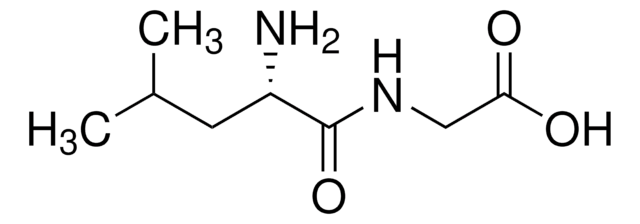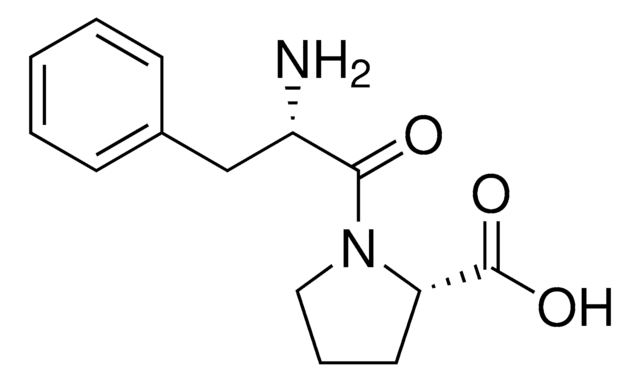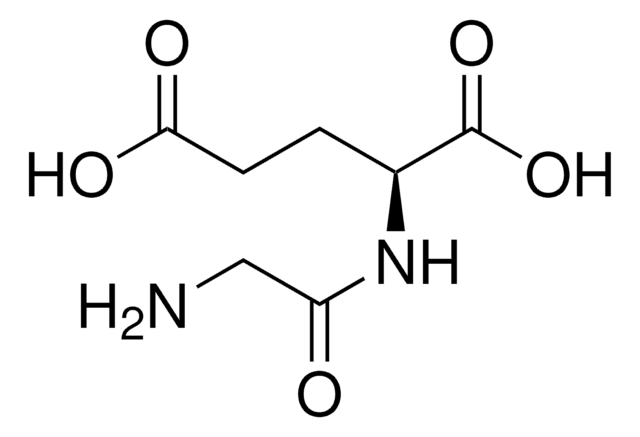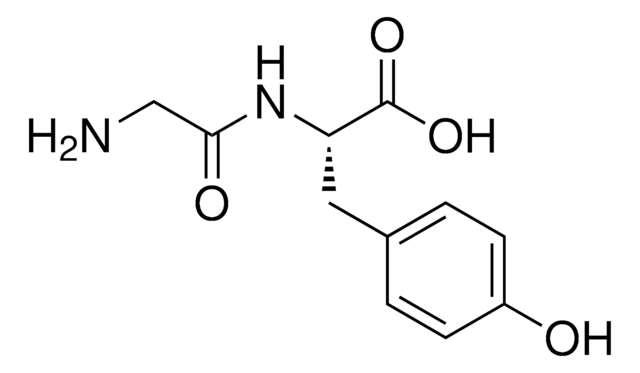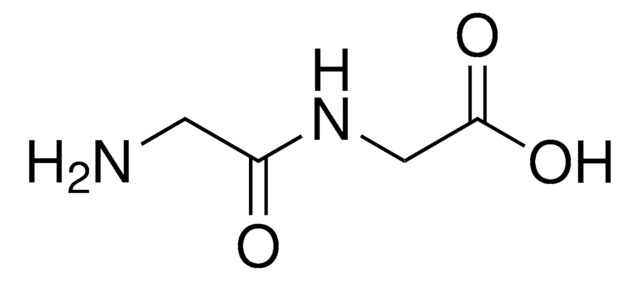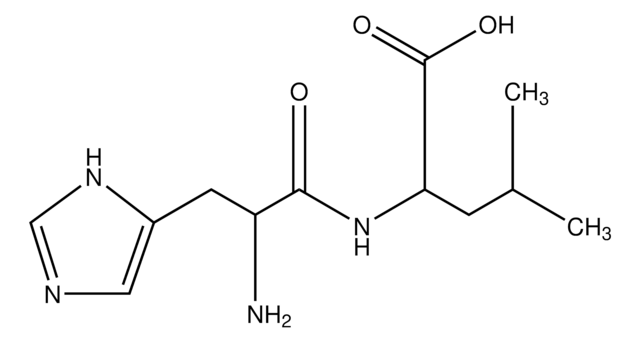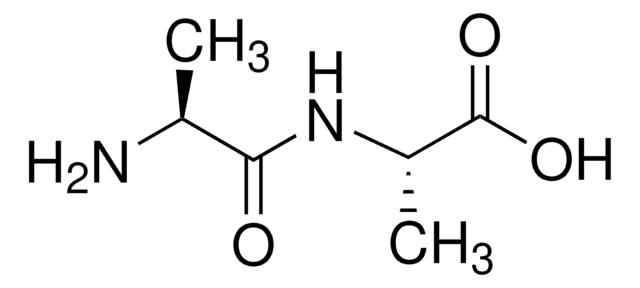All Photos(1)
About This Item
Empirical Formula (Hill Notation):
C8H12N4O3
CAS Number:
Molecular Weight:
212.21
MDL number:
UNSPSC Code:
12352202
PubChem Substance ID:
NACRES:
NA.26
Recommended Products
Product Name
Gly-His,
form
powder
Quality Level
color
white
storage temp.
−20°C
SMILES string
NCC(=O)NC(Cc1cnc[nH]1)C(O)=O
InChI
1S/C8H12N4O3/c9-2-7(13)12-6(8(14)15)1-5-3-10-4-11-5/h3-4,6H,1-2,9H2,(H,10,11)(H,12,13)(H,14,15)
InChI key
YIWFXZNIBQBFHR-UHFFFAOYSA-N
Storage Class Code
11 - Combustible Solids
WGK
WGK 1
Flash Point(F)
Not applicable
Flash Point(C)
Not applicable
Personal Protective Equipment
dust mask type N95 (US), Eyeshields, Gloves
Choose from one of the most recent versions:
Already Own This Product?
Find documentation for the products that you have recently purchased in the Document Library.
Customers Also Viewed
Giulio Vistoli et al.
Biochemical and biophysical research communications, 492(3), 487-492 (2017-08-24)
The study combines HPLC-based with MS-based competitive analyses to evaluate the quenching activity of a set of carnosine derivatives towards methylglyoxal (MGO) and malondialdehyde (MDA) chosen as representative of α- and β-dicarbonyls, respectively. The obtained results underline that these derivatives
Girolamo Casella et al.
Inorganic chemistry, 47(11), 4796-4807 (2008-05-08)
We have tested several computational protocols, at the nonrelativistic DFT level of theory, for the calculation of 1J(119Sn, 13C) and 2J(119Sn, 1H) spin-spin coupling constants in di- and trimethyltin(IV) derivatives with various ligands. Quite a good agreement with experimental data
E Matczak-Jon et al.
Journal of inorganic biochemistry, 12(2), 143-156 (1980-04-01)
1H and 13C nmr studies on the Pd(II)Gly-His complex interaction with cytidine and GMP have shown that the nucleoside binds the palladium complex via N3 nitrogen and the nucleotide binds that complex via N7 nitrogen. The analysis of the Cyd
Giampiero De Sanctis et al.
Journal of biological inorganic chemistry : JBIC : a publication of the Society of Biological Inorganic Chemistry, 11(2), 153-167 (2005-12-13)
The pH dependence of redox properties, spectroscopic features and CO binding kinetics for the chelated protohemin-6(7)-L-histidine methyl ester (heme-H) and the chelated protohemin-6(7)-glycyl-L-histidine methyl ester (heme-GH) systems has been investigated between pH 2.0 and 12.0. The two heme systems appear
Flora Carrera et al.
Inorganic chemistry, 43(21), 6674-6683 (2004-10-13)
Knowledge of the complexes formed by N-coordinating ligands and Cu(II) ions is of relevance in understanding the interactions of this ion with biomolecules. Within this framework, we investigated Cu(II) complexation with mono- and polydentate ligands, such as ammonia, ethylenediamine (en)
Our team of scientists has experience in all areas of research including Life Science, Material Science, Chemical Synthesis, Chromatography, Analytical and many others.
Contact Technical Service
